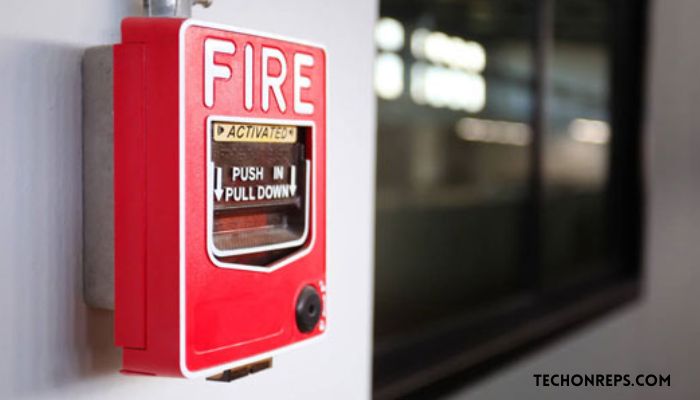Understanding Personal Alert Safety System Definition: What You Need to Know
Personal alert safety systems, also known as personal emergency response systems (PERS), are devices or services designed to provide immediate assistance in the event of an emergency or when help is needed. These systems are especially important for individuals who may be at risk due to age, health conditions, or other factors. By wearing or having access to a personal alert safety system, individuals can have peace of mind knowing that help is just a button press away.
The importance of personal alert safety systems cannot be overstated. For seniors living alone, these systems can be a lifeline in case of falls, accidents, or medical emergencies. They can also provide reassurance to caregivers and loved ones, who can rest easy knowing that their family member has access to help when needed. Additionally, personal alert safety systems can promote independence for individuals with disabilities, allowing them to live more confidently and securely.
Types of Personal Alert Safety Systems: Which One is Right for You?
There are several types of personal alert safety systems available on the market today, each with its own unique features and benefits. The right system for you will depend on your specific needs and preferences. Here are some of the most common types of personal alert safety systems:
1. Wearable devices: These are typically small devices that can be worn on the wrist, around the neck, or clipped to clothing. They often feature a button that can be pressed to send an alert to a monitoring center or designated contacts. Some wearable devices also include additional features such as fall detection or GPS tracking.
2. Mobile apps: With the widespread use of smartphones, many personal alert safety systems now offer mobile apps that can turn your phone into a personal emergency response device. These apps often include features such as GPS tracking, two-way communication, and the ability to send alerts to designated contacts.
3. Home-based systems: These systems typically consist of a base unit that is connected to a landline or cellular network, along with wearable or wall-mounted buttons that can be pressed to send an alert. Home-based systems often include features such as two-way communication, fall detection, and GPS tracking.
4. GPS tracking devices: These devices are designed to provide location information in case of an emergency. They can be worn on the body or placed in a bag or vehicle. GPS tracking devices often include features such as two-way communication and the ability to set up geofences or safe zones.
How Personal Alert Safety Systems Work: A Comprehensive Overview
Personal alert safety systems work by utilizing a combination of sensors, triggers, communication channels, and response protocols. Here is a comprehensive overview of how these systems operate:
1. Sensors and triggers: Personal alert safety systems are equipped with sensors that can detect various events or conditions, such as falls, sudden movements, or the press of a button. These sensors are designed to be highly sensitive and accurate, ensuring that alerts are triggered when needed.
2. Communication channels: When an alert is triggered, personal alert safety systems use various communication channels to transmit the alert to a monitoring center or designated contacts. These channels can include landline or cellular networks, Wi-Fi, or Bluetooth. Some systems also offer the option to send alerts via text message or email.
3. Response protocols: Once an alert is received, the monitoring center or designated contacts will follow predetermined response protocols. This may involve contacting the individual directly to assess the situation, dispatching emergency services, or notifying designated caregivers or family members.
Features to Look for in a Personal Alert Safety System
When choosing a personal alert safety system, there are several key features to consider. These features can enhance the effectiveness and usability of the system, ensuring that you have the best possible protection in case of an emergency. Here are some features to look for:
1. GPS tracking: GPS tracking allows for accurate location information to be transmitted in case of an emergency. This can be especially useful for individuals who may wander or get lost, such as those with dementia or Alzheimer’s disease.
2. Fall detection: Fall detection technology can automatically detect when a fall occurs and trigger an alert. This is particularly important for seniors who may be at risk of falls and may not be able to press a button to call for help.
3. Two-way communication: Two-way communication allows for direct communication between the individual and the monitoring center or designated contacts. This can be crucial in providing reassurance and gathering additional information about the situation.
4. Battery life: It is important to consider the battery life of the personal alert safety system, especially if it is a wearable device or mobile app. Longer battery life means less frequent charging and ensures that the system is always ready for use.
5. Waterproofing: If you plan to use the personal alert safety system in wet or humid environments, such as in the shower or while swimming, it is important to choose a system that is waterproof or water-resistant.
Benefits of Using a Personal Alert Safety System
Using a personal alert safety system offers numerous benefits for individuals and their loved ones. Here are some of the key advantages:
1. Increased safety and security: Personal alert safety systems provide a sense of security and peace of mind, knowing that help is just a button press away. This can be especially important for individuals who live alone or have health conditions that put them at risk.
2. Peace of mind for caregivers and loved ones: For caregivers and loved ones, personal alert safety systems can provide reassurance that their family member or loved one has access to help when needed. This can alleviate worry and allow caregivers to have peace of mind, even when they are not physically present.
3. Independence for seniors and people with disabilities: Personal alert safety systems can promote independence for seniors and individuals with disabilities, allowing them to live more confidently and securely. With the assurance of immediate assistance, individuals can maintain their independence and continue to engage in activities they enjoy.
Who Can Benefit from a Personal Alert Safety System?
Personal alert safety systems are beneficial for a wide range of individuals. Here are some groups of people who can benefit from using these systems:
1. Seniors: Seniors who live alone or have health conditions that put them at risk can greatly benefit from personal alert safety systems. These systems can provide immediate assistance in case of falls, accidents, or medical emergencies, allowing seniors to age in place and maintain their independence.
2. People with disabilities: Individuals with disabilities, whether physical or cognitive, can benefit from personal alert safety systems. These systems can provide a sense of security and peace of mind, knowing that help is readily available in case of an emergency.
3. Children: Personal alert safety systems can also be useful for children, especially those who may have medical conditions or special needs. These systems can provide parents with peace of mind, knowing that their child has access to help when needed.
4. Outdoor enthusiasts: Individuals who enjoy outdoor activities such as hiking, camping, or biking can benefit from personal alert safety systems with GPS tracking capabilities. These systems can provide location information in case of emergencies or if the individual becomes lost or injured.
How to Choose the Best Personal Alert Safety System for Your Needs
Choosing the best personal alert safety system for your needs requires careful consideration and research. Here are some steps to help you make an informed decision:
1. Assess your needs: Start by assessing your specific needs and requirements. Consider factors such as your living situation, health conditions, and lifestyle. This will help you determine which features and capabilities are most important to you.
2. Research available options: Once you have identified your needs, research the available options on the market. Look for reputable brands and manufacturers that have a track record of producing reliable and high-quality personal alert safety systems.
3. Compare features and prices: Compare the features and prices of different systems to find the best fit for your needs and budget. Consider factors such as GPS tracking, fall detection, two-way communication, battery life, and waterproofing.
4. Read reviews and ratings: Before making a final decision, read reviews and ratings from other users. This can provide valuable insights into the performance and reliability of the system.
How to Install and Set Up Your Personal Alert Safety System
Once you have chosen a personal alert safety system, it is important to properly install and set it up to ensure its effectiveness. Here are some steps to follow:
1. Follow manufacturer instructions: Carefully read and follow the manufacturer’s instructions for installation and setup. This will ensure that you are setting up the system correctly and maximizing its functionality.
2. Test the system: After installation, test the system to ensure that it is working properly. Press the alert button or trigger the sensors to verify that alerts are being sent and received as intended.
3. Register with monitoring services: If your personal alert safety system includes monitoring services, make sure to register with them. Provide any necessary information, such as emergency contacts or medical history, to ensure that responders have all the necessary details in case of an emergency.
How to Test Your Personal Alert Safety System
Regular testing of your personal alert safety system is essential to ensure its reliability and effectiveness. Here are some procedures to follow when testing your system:
1. Regular testing procedures: Set a schedule for regular testing of your personal alert safety system. This can be done weekly or monthly, depending on your preference. Follow the manufacturer’s instructions for testing procedures, which may involve pressing the alert button or triggering the sensors.
2. Troubleshooting common issues: If you encounter any issues during testing, refer to the troubleshooting guide provided by the manufacturer. Common issues may include connectivity problems, false alarms, or battery issues. If the problem persists, contact customer support for further assistance.
How to Maintain Your Personal Alert Safety System
Proper maintenance of your personal alert safety system is important to ensure its longevity and reliability. Here are some maintenance tasks to keep in mind:
1. Cleaning and charging: Regularly clean your personal alert safety system to remove dirt, dust, or debris that may affect its performance. If the system is rechargeable, make sure to charge it as needed to ensure that it is always ready for use.
2. Updating software and firmware: Check for software or firmware updates for your personal alert safety system. These updates may include bug fixes, performance improvements, or new features. Keeping your system up to date will ensure that you have the latest enhancements and security patches.
3. Replacing batteries and components: If your personal alert safety system uses batteries, make sure to replace them as needed. Follow the manufacturer’s instructions for battery replacement to ensure proper functionality. Additionally, if any components of the system become damaged or worn out, contact the manufacturer for replacement parts.
Frequently Asked Questions About Personal Alert Safety Systems
Here are some frequently asked questions about personal alert safety systems:
1. How much do personal alert safety systems cost?
The cost of personal alert safety systems can vary depending on the brand, features, and service plans. Some systems may require an upfront purchase or monthly subscription fees.
2. Do personal alert safety systems require a contract?
Some personal alert safety systems may require a contract or service agreement, while others may offer month-to-month options. It is important to carefully review the terms and conditions before making a purchase.
3. Can personal alert safety systems be used outside of the home?
Yes, many personal alert safety systems can be used outside of the home. Systems with GPS tracking capabilities are especially useful for individuals who are on the go or enjoy outdoor activities.
4. What happens if I trigger my personal alert safety system accidentally?
If you accidentally trigger your personal alert safety system, you can simply inform the monitoring center or designated contacts that it was a false alarm. It is important to familiarize yourself with the cancellation procedures provided by the manufacturer.
Conclusion: Staying Safe with a Personal Alert Safety System
Personal alert safety systems are essential tools for individuals who may be at risk due to age, health conditions, or other factors. These systems provide immediate assistance in case of emergencies or when help is needed, promoting safety, security, and peace of mind. By choosing the right system for your needs, properly installing and setting it up, regularly testing and maintaining it, and following best practices, you can ensure that your personal alert safety system is always ready to provide the help you need when you need it.



